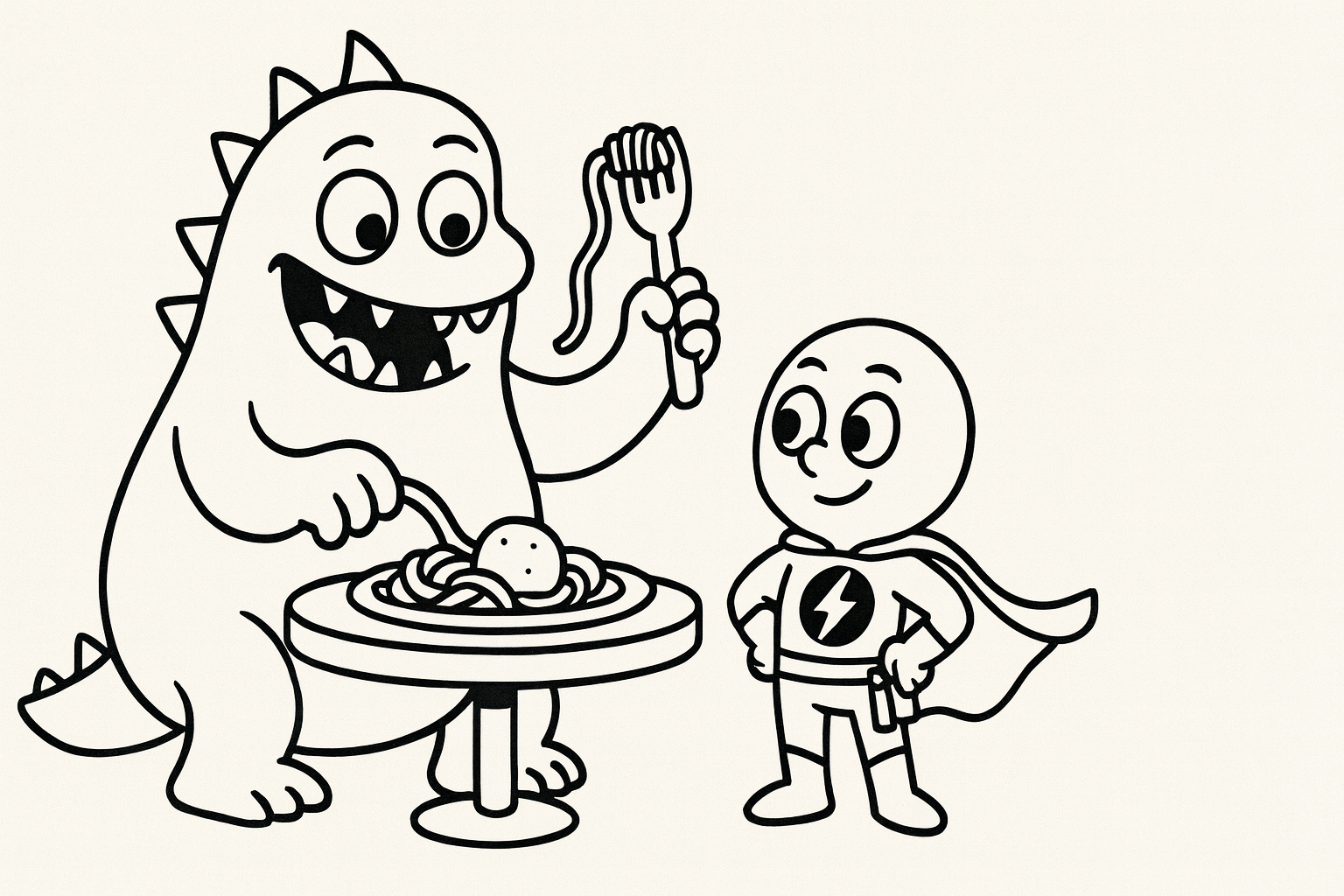MEAL BOLT: A Tutorial for Insulin Dosing
✅ Step 1:
M — Measure the Meal
Goal: Understand what you're about to eat.
🔍 What to do:
Estimate total carbohydrates
Consider protein and fat content
Identify glycemic index/load of the meal
(e.g., fast carbs like juice vs. slow carbs like lentils)
🧠 Why:
Carbs determine immediate insulin needs
Fat/protein can delay glucose rise (leading to late spikes)
High glycemic meals spike faster than low glycemic ones
Example: A plate of pasta with cream sauce and chicken = high carb + high fat → may need more insulin, but delivered over time.
✅ Step 2:
E — Evaluate Yourself
Goal: Take a quick snapshot of your current internal environment.
🔍 What to consider:
Current BG (from CGM/BGM)
Insulin on board (IOB) — any insulin still active?
Activity — are you about to exercise? Did you just? Will you be sedentary after the meal?
Stress, hormones, illness?
🧠 Why:
All these factors shift your insulin sensitivity up or down.
Tip: After cardio, you may need less insulin. During a stressful day or illness, you may need more.
✅ Step 3:
A — Add the Base Units
Goal: Calculate the meal bolus for carbs.
🧮 How to calculate:
Carbs ÷ Insulin-to-Carb Ratio (ICR)
Example: Eating 60g carbs, ICR is 1:10 → 60 ÷ 10 = 6 units
🧠 Why:
This gives your base bolus — it covers the food, not corrections or delayed digestion.
Step 4:
L — Layer a Correction
Goal: Add (or subtract) insulin based on your current BG.
🧮 How to calculate:
(Current BG − Target BG) ÷ Correction Factor (CF)
Subtract IOB if needed
Example:
BG = 200, Target = 100, CF = 50
→ (200−100) ÷ 50 = 2 units
→ If IOB = 1 unit → 2 − 1 = 1 extra unit to correct
🧠 Why:
Correction boluses address high blood sugar. But subtract IOB to avoid stacking insulin.
✅ Step 5:
B — Build the Bolus Shape
Goal: Decide how to deliver the insulin — all at once or spread out.
⚙️ Options:
100% upfront for fast-digesting meals (e.g., cereal, fruit)
Combo or square wave bolus for slow-digesting meals (e.g., pizza, creamy pasta, steak)
Example: 60% upfront, 40% over 2 hours for high-fat meals
🧠 Why:
Fat and protein slow digestion. Spreading insulin helps match that slower spike.
✅ Step 6:
O — Offset the Timing
Goal: Decide when to bolus.
⏱️ Options:
Take insulin 0–30 minutes before eating, depending on the type of food and your personal experience with how insulin works for you
Split, combo or square wave bolus if you're unsure or eating slowly
Example: High GI food? Pre-bolus 20–30 minutes.
Low GI or large meal? Consider split or delayed dosing.
🧠 Why:
Matching insulin timing to food absorption helps reduce post-meal spikes.
✅ Step 7:
L — Look at the CGM
Goal: Watch how your body responds in real-time.
⏰ Spot check at:
1 hour → Was there a fast spike?
3 hours → Any delayed rise?
5 hours → Any lingering effect from fat/protein?
Tip: A flat CGM line = a great match.
Spike then drop? Could mean too little pre-bolus or delayed digestion.
✅ Step 8:
T — Tweak for Next Time
Goal: Use what you learned to improve future boluses.
✍️ What to log:
What you ate
How much insulin and when
What your BG curve looked like
What you’d do differently next time
Example:
“60g of Chinese food, gave full bolus up front. Spiked at 2h → Next time: 50% upfront, 50% over 2 hours.”
🧠 Why:
Diabetes is pattern-based. Learn from every meal to build mastery over time.
Summary
M – Measure the Meal (carbs, fat, protein, glycemic impact)
E – Evaluate Yourself (BG, IOB, activity, stress)
A – Add the Base Units (carbs ÷ insulin-to-carb ratio)
L – Layer a Correction ((Current BG − Target) ÷ CF – IOB)
B – Build the Bolus Shape (upfront % vs. extended %)
O – Offset the Timing (pre-bolus lead time or split dose)
L – Look at the CGM (check curve ~1h, 3h, 5h)
T – Tweak for Next Time (log & adjust based on results)
